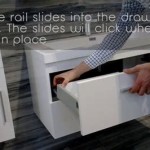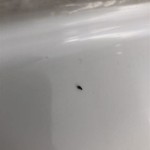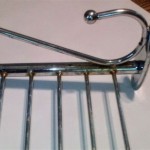How to Fix a Bathroom Sink Faucet Drip
A dripping bathroom sink faucet, though seemingly minor, can be a significant source of frustration and wasted water. The persistent drip not only creates an annoying sound but also contributes to increased water bills and potential water damage over time. Addressing a dripping faucet promptly is crucial for conserving water, saving money, and preventing more serious plumbing issues. This article provides a comprehensive guide on diagnosing and repairing a dripping bathroom sink faucet.
Before embarking on any faucet repair, safety is paramount. The first step involves turning off the water supply to the faucet. Typically, shut-off valves are located beneath the sink, one for hot water and one for cold water. Turn both valves clockwise until they are fully closed. If shut-off valves are not present beneath the sink, it may be necessary to turn off the main water supply to the entire house. Once the water supply is shut off, open the faucet to relieve any remaining pressure in the lines. Place a stopper in the sink drain to prevent any small parts from falling into the drain during the repair process. Gather any necessary tools, such as screwdrivers (both flathead and Phillips head), an adjustable wrench, penetrating oil (like WD-40), plumber's grease, replacement parts (determined by the faucet type and problem), and a clean cloth or towel. Identifying the type of faucet is also essential, as different faucet types require different repair procedures.
Identifying the Faucet Type
The repair process for a dripping faucet varies considerably depending on the type of faucet installed. The most common types of bathroom sink faucets are compression faucets, cartridge faucets, ball faucets, and ceramic disc faucets. Each type has its unique components and repair methods. Properly identifying the faucet type is crucial for selecting the correct replacement parts and following the appropriate repair steps.
Compression Faucets: These are the oldest and simplest type of faucet. They are easily recognizable by their two separate handles for hot and cold water. To control the water flow, these faucets use rubber washers that are compressed against the valve seat when the handle is turned off. A worn or damaged washer is the most common cause of drips in compression faucets.
Cartridge Faucets: Cartridge faucets usually have a single handle that controls both the water temperature and flow. The handle lifts and turns to adjust the water. The water flow is controlled by a cartridge inside the faucet body. The cartridge is typically made of plastic or metal and contains O-rings and seals that can wear out over time, leading to leaks.
Ball Faucets: Ball faucets are also single-handle faucets that control water flow and temperature with a rotating ball mechanism inside the faucet body. These faucets have numerous components, including O-rings, springs, and a cam assembly, which can wear down and cause leaks. Ball faucets are generally more complex to repair than other types of faucets.
Ceramic Disc Faucets: These are the most modern type of faucet and are known for their durability and smooth operation. They feature a single lever handle that raises and lowers to control the water flow. Ceramic disc faucets use two ceramic discs that slide against each other to control the water flow. While generally reliable, these faucets can develop leaks if the ceramic discs become damaged or if debris gets lodged between them.
Troubleshooting the Drip Source
Once the faucet type is identified, the next step is to pinpoint the source of the drip. While a worn washer is a common culprit in compression faucets, the source of a drip can vary in other faucet types. Examining the faucet closely while it is dripping can provide clues. Look for water leaking from around the handle, the spout, or the base of the faucet.
Compression Faucets: If the drip is coming from the spout, the most likely cause is a worn or damaged rubber washer. However, drips can also occur if the valve seat is corroded or damaged. Examine the washer for cracks, breaks, or deformation. The valve seat can be inspected for corrosion or mineral buildup. Sometimes, tightening the packing nut below the handle can stop minor leaks around the handle.
Cartridge Faucets: Drips from cartridge faucets often originate from a worn or damaged O-ring on the cartridge. Water may also leak from around the handle if the cartridge itself is failing. Carefully examine the cartridge for cracks or damage. Mineral deposits can also accumulate around the cartridge, causing it to malfunction.
Ball Faucets: Leaks in ball faucets can be more challenging to diagnose due to the numerous components involved. Common causes include worn O-rings, loose adjusting rings, or a damaged ball. The location of the leak can provide clues. For example, a leak at the base of the spout might indicate a worn O-ring, while a leak from the handle might suggest issues with the cam assembly.
Ceramic Disc Faucets: Drips in ceramic disc faucets are often caused by debris or mineral deposits interfering with the seal between the ceramic discs. Damage to the ceramic discs themselves can also cause leaks. Inspect the discs for any visible cracks or chips. Flushing the faucet lines can sometimes dislodge debris and resolve the issue.
Step-by-Step Repair Procedures
Once the faucet type has been identified and the source of the drip determined, proceed with the repair. The following are general procedures for repairing each type of faucet. Always consult the manufacturer’s instructions or a plumbing professional if unsure about any step.
Repairing a Compression Faucet:
- Remove the handle by unscrewing the screw at the top of the handle (often hidden beneath a decorative cap).
- Unscrew the packing nut that holds the stem in place.
- Remove the stem by turning it counterclockwise.
- Remove the screw holding the washer in place at the bottom of the stem.
- Replace the old washer with a new one of the same size and type.
- Inspect the valve seat for corrosion or damage. If necessary, use a valve seat wrench to smooth the surface or replace the seat.
- Apply plumber's grease to the threads of the stem.
- Reassemble the faucet in reverse order.
Repairing a Cartridge Faucet:
- Remove the handle by loosening the set screw (often located on the side or back of the handle).
- Remove the retaining clip or nut that holds the cartridge in place.
- Gently pull the cartridge straight up out of the faucet body. It may be necessary to wiggle the cartridge to loosen it.
- Inspect the cartridge and O-rings for wear or damage. Replace the cartridge with a new one of the same type.
- Apply plumber's grease to the O-rings of the new cartridge.
- Reassemble the faucet in reverse order.
Repairing a Ball Faucet:
- Loosen the set screw on the handle and remove the handle.
- Unscrew the cap and collar.
- Remove the ball and inspect it for damage. Replace it if necessary.
- Use a specialized tool or needle-nose pliers to remove the springs and rubber seats.
- Replace the springs and seats with new ones.
- Reassemble the faucet in reverse order, ensuring the adjusting ring is properly tightened.
Repairing a Ceramic Disc Faucet:
- Remove the handle by loosening the set screw.
- Remove the escutcheon cap.
- Unscrew the cylinder retaining screws.
- Lift out the cylinder assembly.
- Clean the ceramic discs and the surrounding area, removing any debris or mineral deposits.
- If the ceramic discs are damaged, replace the entire cylinder assembly.
- Reassemble the faucet in reverse order.
After completing the repair, turn the water supply back on slowly and check for leaks. If leaks persist, double-check the installation of all components and ensure that all connections are tight. In some cases, repeat the disassembly and reassembly process, paying close attention to the position and condition of each part.
In some instances, despite diligent efforts, the drip may persist. This could indicate more complex underlying problems, such as damage to the faucet body or the plumbing within the wall. In these situations, it may be necessary to consult a qualified plumbing professional to diagnose and resolve the issue. A plumber has the expertise and tools to identify and repair complex plumbing problems, ensuring that the faucet is functioning properly and preventing further damage.
Regular maintenance can help prevent future faucet drips and extend the lifespan of the faucet. Periodically inspect the faucet for any signs of leaks or wear. Clean the faucet regularly to remove mineral deposits and prevent corrosion. Applying plumber's grease to O-rings and threads can help keep components lubricated and prevent them from drying out and cracking. By addressing minor issues promptly and performing routine maintenance, homeowners can avoid costly repairs and ensure the long-term functionality of their bathroom sink faucets.

5 Reasons Your Faucet Is Dripping Water How To Fix It

How To Fix A Leaky Faucet True Value

5 Reasons Your Faucet Is Dripping Water How To Fix It

Properly Fixing A Leaky Sink Faucet Wallside Windows

How To Fix A Dripping Moen Faucet Howtolou Com

How To Fix A Leaky Faucet The Home Depot

Water Dripping From Faucet Why And How To Fix

How To Fix A Leaky Bathroom Sink Faucet

Sink Faucet Repair Delta Bathroom Drips

How To Fix A Leaky Faucet Guides For Every Design And Style
Related Posts







